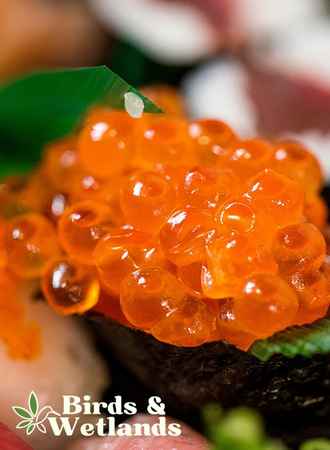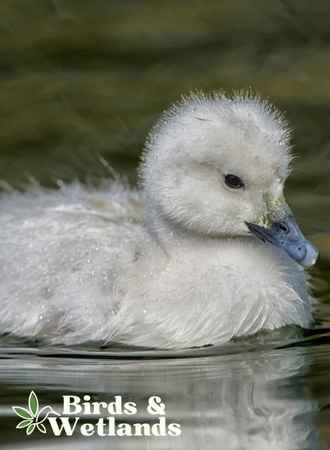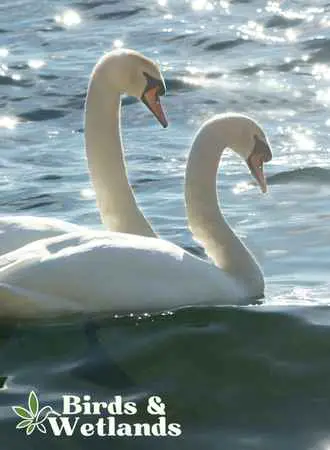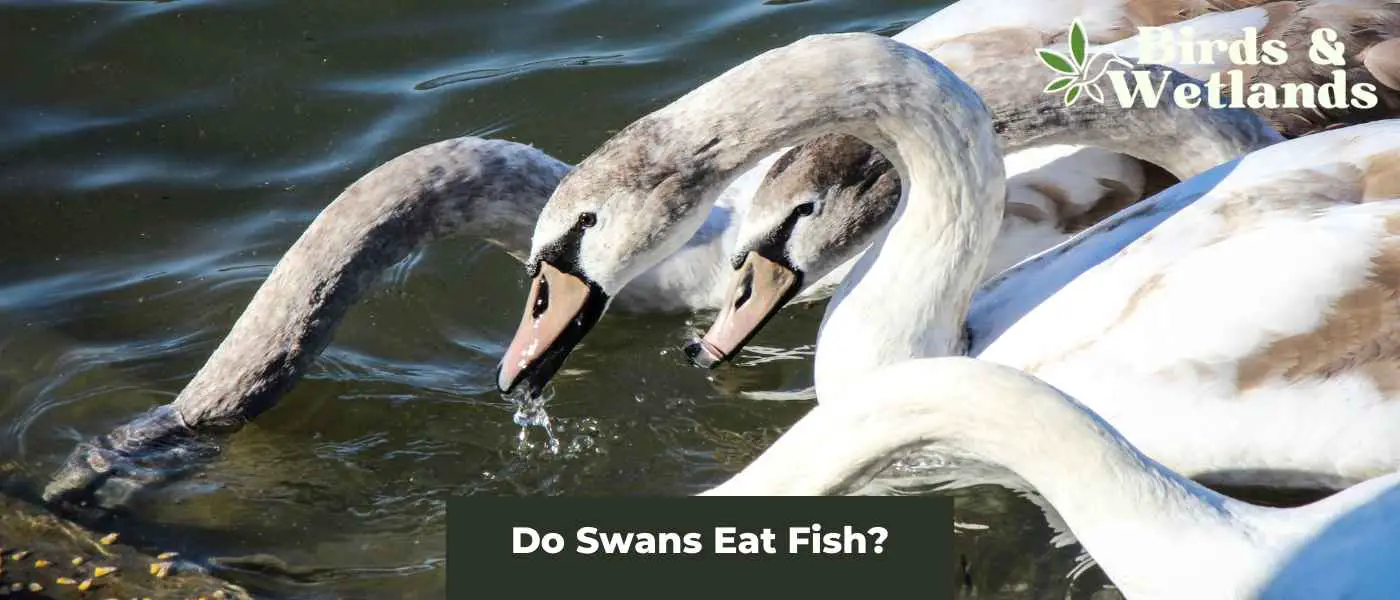Swans are graceful and elegant birds that are often found in ponds and lakes, where they glide through the water and feed on aquatic vegetation.
While their primary diet consists of plants, many people wonder whether swans also eat fish
But do swans eat fish?
Swans are primarily herbivores, and their diet mainly consists of aquatic vegetation, such as submerged and floating plants. However, swans may occasionally consume small fish, insects, and other aquatic invertebrates. This opportunistic feeding behavior is more common in young swans (cygnets) or when their preferred plant food is scarce. Adult swans typically rely on vegetation for the majority of their sustenance.
Key Takeaways on Do Swans Eat Fish
- Primarily herbivores: Swans predominantly feed on aquatic vegetation, including submerged and floating plants.
- Occasional consumption: Swans may occasionally eat small fish, insects, and other aquatic invertebrates, especially when plant food is scarce or during their young (cygnet) stage.
- Adult swan diet: Adult swans typically rely on vegetation for the majority of their sustenance, with animal matter playing a minor role in their diet.
- Balanced diet: Swans require a balanced diet consisting of aquatic vegetation and occasional supplementary foods, such as leafy greens and grains like oats.
- Feeding practices: When feeding swans, it is essential to provide a varied and balanced diet and avoid overfeeding, which can lead to health issues and dependency on humans.
Are fish good for swans?
Swans eat plenty of plants and other foods. In fact, they consume about 20% to 25% of their total body weight.
Eating fish and other animals is an important part of a swan’s diet, as it provides many essential health benefits for their overall well-being.
First, fish is an excellent source of protein, essential for the growth and repair of tissues in the body. Protein is important for swans, who must build and maintain strong muscles to fly and swim efficiently. Additionally, baby swans need a good amount of protein in their diets since they are still developing their bodies.
Fish also contains essential amino acids, which are the building blocks of protein and are required by the body to produce enzymes and hormones.
In addition to protein, fish also contains various vitamins and minerals that are important for swan health. For example, fish is a rich source of omega-3 fatty acids, which have been shown to have anti-inflammatory properties and may help to reduce the risk of heart disease.
Fish is also a good source of vitamin D, which helps the body absorb calcium and is important for the health of bones and teeth. Furthermore, fish also contains a good amount of minerals such as zinc, iodine, and selenium, all essential for good health.
Another benefit of fish in a swan’s diet is that it can help to improve their immune system. Fish is high in selenium, an essential mineral that plays a vital role in the body’s immune system. Selenium is an antioxidant that helps the body fight off harmful free radicals and may protect against cancer.
Interestingly, swans are less likely to eat small animals as they grow older. Young swans eat more animal matter than adult swans. Swans also eat freshwater fish since they can’t survive in a salt water environment.

What kinds of fish and aquatic animals do swans eat?
Swans are opportunistic feeders, meaning they will eat various types of fish depending on what is available in their environment. Some of the most common types of fish and small aquatic animals that swans may eat include:
- Smaller fish species, such as minnows, small carp, and sticklebacks.
- Aquatic invertebrates such as dragonfly larvae, water beetles, and freshwater snails.
- Amphibians such as frogs and salamanders.
- Fish eggs aid by other fish species in the area.
Swans have long necks, which they use to reach and grasp food that’s on the bottom of the body of water they are in, or they would dive down. They have highly specialized bills which can strain food particles out of the water.
Swans are known to be able to change their diet based on the season and the availability of food. They can also consume other aquatic organisms, such as crustaceans, mollusks, and aquatic plants. As a result, swans can eat different types of fish depending on the location and the time of year.

Can baby swans eat fish?
Yes, baby swans will eat fish as part of their diet. As with adult swans, cygnets are opportunistic feeders and will eat various types of food depending on what is available in their environment.
When cygnets are first hatched, they already know how to find food and feed themselves. However, male and female swans still guide them when searching for food in the water or foraging on land. They can’t dabble as adults do, so they only eat food on the surface of the shallow water.
As the baby swan ages, it will begin to eat fish and other aquatic organisms but still eats plants. Their parents will help them to catch fish by bringing them closer to the surface and helping to break the fish up into smaller pieces.
It is important to note that while fish can be a good source of nutrition for cygnets, they should not be fed an exclusive diet of fish. They need a balanced diet that includes various types of food to get all the essential nutrients for healthy growth and development.

FAQs & Related Questions on Feeding Swans
Do swans eat bread?
Bread is an unhealthy food for swans and can lead to numerous health issues. While bread is low in nutritional value, it can still provide some energy and calories, but these are mostly made up of simple carbohydrates, which, due to their lack of protein, vitamins and minerals,
When people feed swans bread, they are likely to consume too much bread with many empty calories, which can easily lead to obesity and all the associated problems this brings.
The mute swan at your local park will become too reliant on human foods such as bread, meaning it misses out on more nutritious food sources such as aquatic plants, insects and small creatures that would otherwise be available to them.
Furthermore, bread contains several ingredients that are not ideal for the health of swans. For instance, many types of bread include salt, which can cause dehydration and kidney damage.
The high carbohydrate content in bread also increases blood glucose levels, putting extra strain on the heart and increasing the risk of cardiovascular diseases.
So, feeding bread to swans is not ideal. If you want to feed swans, feed them tiny fish and leafy greens instead.

What predators eat swans?
Wild swans, like many other birds, have a variety of natural predators that prey on them. Some of the most common predators of swans include:
- Foxes
- Coyotes
- Raccoons
- Hawks
- Eagles
- Owls
- Minks
It’s also worth noting that while predation is a natural part of any ecosystem, human activities such as habitat destruction and pollution can increase the vulnerability of most swan species to predation. The more the white and black swans are exposed to human-made stressors and disturbances, the more likely they fall prey to predators even in their natural habitat.
What do mute swans eat?
Mute swans are opportunistic feeders that eat plants and a wide range of aquatic organisms, with fish being one of their main food sources. They have a specialized bill that they use to filter out food from the water and can also dive down in the water to reach food at the bottom.
Many swans eat various aquatic plants and green vegetation such as pondweed, wild celery, wild rice, duckweed, and eelgrass. They also feed on minnows, small carp, sticklebacks, dragonfly larvae, other tiny fish, frogs, eggs, water beetles, and freshwater snails.
In addition, they may also consume small amounts of waste grain, bread and other human-provided food. This can be harmful as they may have nutritional deficiencies or become overweight. It’s also important to note that the artificial feeding of swans can alter their natural behavior, which could increase their vulnerability to disease and negatively impact the entire population’s health.

What do whooper swans eat?
Like the trumpeter swan and the black-necked swan, whooper swans eat both plant and small animals. The diet of the whooper swan consists mainly of aquatic vegetation and other creatures. They are almost exclusively herbivorous birds but may occasionally feed on small invertebrates such as water snails, worms, crustaceans, and insect larvae.
In some cases, they may also eat small fish if available. These large birds typically consume a wide range of aquatic plant matter, including rushes, sedges, grasses, pondweeds, horsetail, and other submerged aquatic plants. They use their powerful beaks to pick through the mud or shallow waters for food.
On land, this species of swans may unintentionally eat natural food such as grasses, cereals, grains, roots, and tubers. These swans have strong digestive systems that allow them to digest permitted foods.

Other Food For Swans
Best Waterfowl Feed
Delightful Feeding Experience
Transform your backyard into a scenic waterfowl habitat and enjoy an interactive feeding experience with Natural Waterscapes Waterfowl Floating Food.

Pros
- Nutritious Food: Natural Waterscapes Waterfowl Floating Food is specifically designed to provide essential nutrients to waterfowl, including swans, geese, and ducks, helping them maintain a healthy diet.
- Convenient: The food comes in resealable packaging, making it easy to store and use as needed. It is also easy to handle and transport.
- Floating Formula: The floating formula of the food allows it to remain on the surface of the water, making it easier for waterfowl to eat and minimizing the risk of water contamination.
- Attracts Waterfowl: The food is formulated to attract various waterfowl species, including swans, geese, and ducks, to your pond, lake, or other water body, providing an opportunity to observe and enjoy these beautiful creatures.
- Environmentally Friendly: Natural Waterscapes Waterfowl Floating Food is made with environmentally friendly ingredients and does not contain any harmful preservatives, making it safe for both waterfowl and the environment.
Cons
- Shelf Life: The food’s shelf life may be limited compared to other types of waterfowl food due to its natural ingredients and lack of preservatives. This means you may need to use it up quickly after opening the package to prevent it from going bad.

